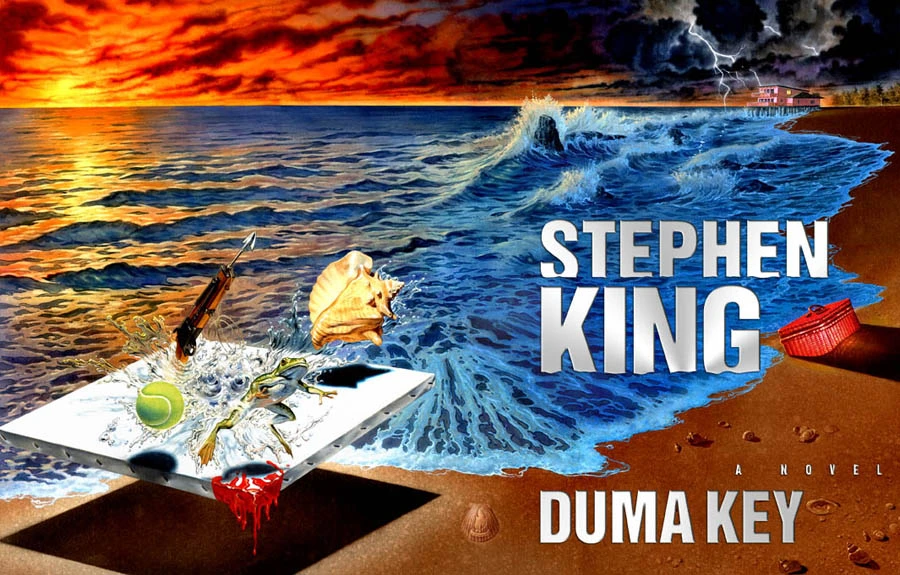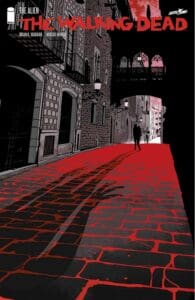
“Be prepared to see it all. If you want to create – God help you if you do, God help you if you can – don’t you dare commit the immorality of stopping on the surface. Go deep and take your fair salvage. Do it no matter how much it hurts.”
Welcome back, fellow Constant Reader. Or welcome, first-time customer, to my “Essays of a Recent Constant Reader” series. If you’re new to these parts, allow me to explain this setup. While most folks have memories of reading Stephen King way too young, I can’t say the same is true for me. Rather than sharing reviews of Mr. King’s titles as I find myself reading them, I thought I would share reflections, essays detailing the intricacies of what these books mean to me as a twenty-something-year-old kicking her way through life. If this sounds like cool reading material, I have two other essays about Carrie and It that you can also check out. But, to the main attraction, Duma Key.
Truthfully, this tome wasn’t even on my radar for this year’s reading, but then I found myself on a Florida beach and repeating the phrase, “When in Rome” (or, I guess, in this case Florida?). And like some of life’s great joys, I wasn’t really prepared for how impactful this novel would prove to be. You don’t hear so much about some of King’s longer works from the 90s or 2000s with most of today’s commentary focusing on the heavy-hitters of It, The Stand, or The Talisman to name a few. And maybe this lack of opinion going into Duma Key worked in my favor. Released in 2008, this is another door-stopper contribution from King that seems to detail the intricacies of the human relationship with art and the hardship of recovery, the idea of possibly having to reinvent yourself. Perhaps this is King’s conversation with trauma and healing following the accident in 1999 that left him severely injured. Or maybe it’s his reflection of being a writer of his caliber, a person who creates these intricate worlds so consistently. Whatever the case may be, Duma Key feels very personal, one of King’s more emotional works that I’ve picked up. And, man, did it manage to reach me.
The story follows Edgar Freemantle, a man who was crushed by a crane at a construction site, lost his right arm, broke many bones, and suffered a head injury. When we catch up with him, he is struggling with anger in his recovery which ultimately leads to him beginning a whole new life in Duma Key, Florida. This new life also brings about a new hobby in which Edgar discovers his artistic abilities, but there’s something strange on Duma Key. Something uncanny about his paintings and the elderly woman who lives down the way. The nagging itch in the arm he no longer has, the burning desire to create.
King delivers some stellar character work in this novel between Edgar’s development, independently, and his relationship with his newfound friend, Jerome Wireman. Dare I say, Wireman is probably one of my favorite King characters in general with his strong sense of loyalty, quirky sense of humor, and dedication to the people he cares for most. This novel is written in a way that feels like you’re reconnecting with your good friend, the kind of friend you have your own sense of humor and secret language. There’s an organic fondness at work here between Edgar and Wireman, a level of heartfelt endearment that flourishes on the page.
On top of remarkable characters, King writes a unique sense of place with Duma Key. Now, I’m sure reading a chunk of this book while sitting on a beach lent itself to creating a setting that felt incredibly vivid and immersive. But I don’t think that has everything to do with how vivid the sands of the Key shine. You may not think a bright, sunny beach setting to be capable of such horror that is typical of King’s stories, but he writes some bone-chilling scenes with a Gothic-esque atmosphere. The sounds of shells clinking and rattling against each other to form a signature whisper beneath Big Pink, Edgar’s home, live in my ears. It is haunting imagery in a juxtaposed setting that makes for the most startling jolts of terror. Ultimately, King’s creation doesn’t feel all that different than Edgar’s described, fictional artwork. This gives Duma Key an almost meta quality with King possibly commenting on the intensity of his own creative process.
More important than any of those things is the emotional resonance of this novel. Sure, it runs a bit long and lags in some parts, but the payoff for spending all this time with Edgar is monumental. The last 40% of the novel takes a very unexpected turn that is not afraid to get down to the nitty-gritty darkness of grief, loss, and suffering. A few scenes from the very end stand out clear as day in my mind, appearing like one of Edgar’s haunting paintings that captivate so many. With these raw, emotional scenes, King clearly depicts the power of creativity and imagination, possibly the danger in it if not wielded carefully. There are some moving passages about what it means to dig down within yourself and share a part of you that you maybe never realized was there to begin with. It’s powerful stuff here, the kind of writing we should be talking about more.
More than being powerful, it is empowering. Duma Key is the kind of novel that sends you searching for those dusty old art supplies. Maybe you’ll find yourself pulling out a sketch pad, a canvas, a typewriter, or (less romantically but still effective) opening a Word doc. Through this long, winding tale with an incredibly strong sense of place and character, we see the strengths of vulnerability and living authentically even though this is a life that will hurt. Despite all that hurt, all that pain, there’s a lot of beauty, a lot to stick around for and witness. Or maybe even create yourself. This rawness on display with Duma Key is one of those very things of beauty, an unexpected but welcome venture into the human condition.




Leave a Reply